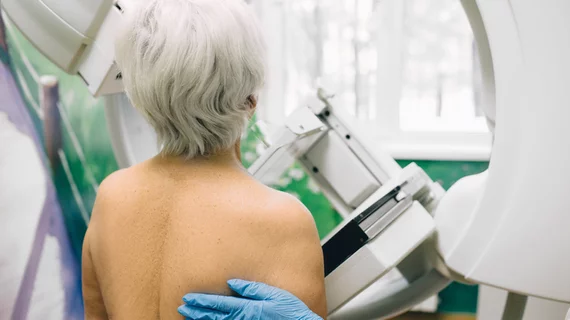AI prevents mammography positioning errors before exposure
Artificial intelligence could help improve mammogram quality by alerting technologists when their patient positioning is not ideal, according to new data presented during the annual meeting of the Radiological Society of North America.
Optimal positioning for mammograms is critical to acquiring diagnostic quality images. But the reality is that mammograms are uncomfortable for patients, which can often make it difficult for them to get into and hold the appropriate positions. Improper positioning may require techs to have to repeat images, exposing patients to additional radiation and slowing workflows. If not corrected, improper positioning could potentially hinder radiologists’ ability to visualize abnormalities.
This latest research suggests that AI has the potential to address inadequate positioning before exposures are made by alerting techs to errors that could affect image quality. This could not only spare patients from excess radiation exposure, but it also could save techs time by not having to repeat exams.
“Accurate breast positioning with AI systems is crucial for quality control in mammography, ultimately contributing to optimal image quality and improved diagnostic accuracy,” study author Huizhi Cao suggests.
For the study, experts utilized an AI system (Edison, GE Healthcare) that provides real-time positioning assessments in less than two seconds. The system was trained on more than 30,000 exams, yielding an accuracy of nearly 96% during validation assessments.
Researchers used the system to prospectively evaluate positioning during 223 breast cancer screening examinations. Its assessments were compared to those of four mammographers, with both sets of predictions being judged based on nine different imaging criteria such as incomplete gland, incomplete pectoralis muscle, skin folds, exposure and more.
The AI system performed well in terms of predicting whether patients' positioning would produce quality images, achieving an overall accuracy of 0.958 AUC. Agreement between radiographers and the system ranged from slight to moderate, depending on specific imaging criteria, while agreement between radiographers was more pronounced.
Cao indicates that the AI system has the potential to reduce repeats and subjectivity relative to positioning errors, though more research is needed to better understand the disagreement between mammographers and the system.
Learn more about the results here.

